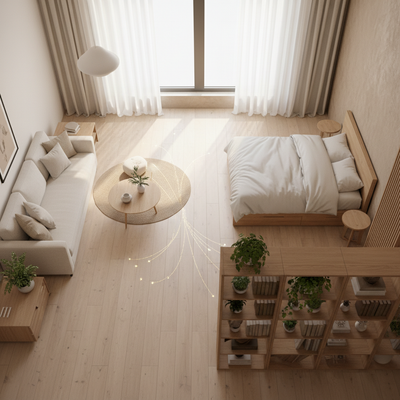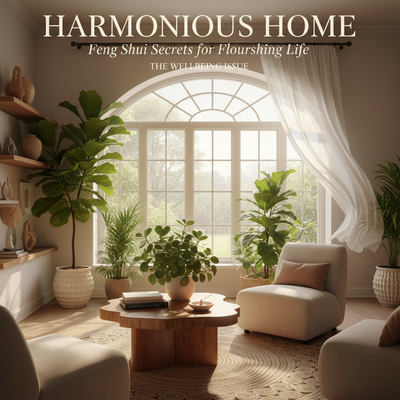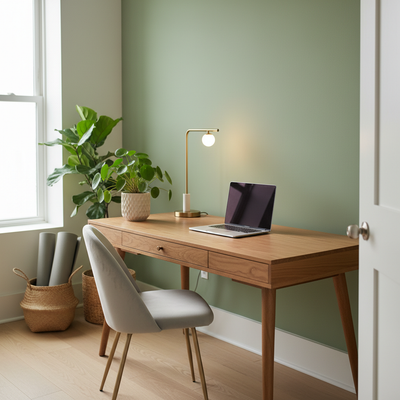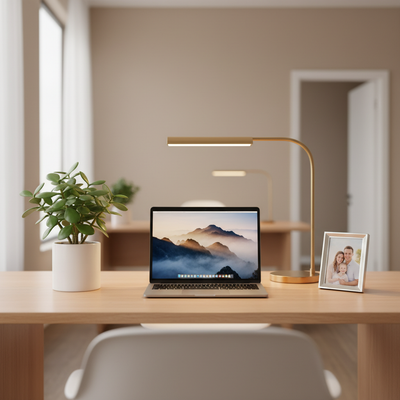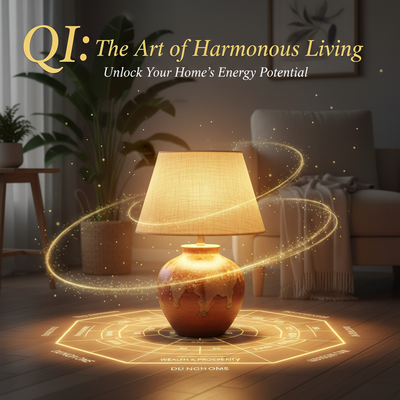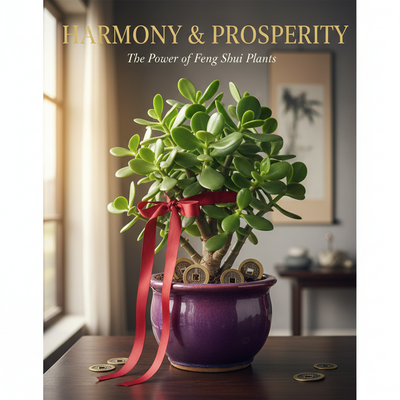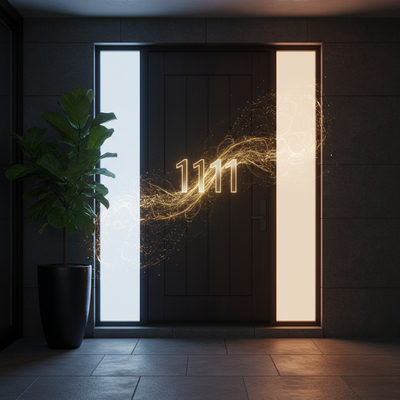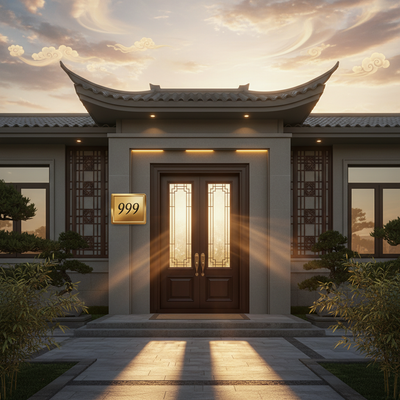Have you ever walked into a room and felt calm right away? Or felt uncomfortable in your own home without knowing why? This feeling that your space is "wrong" happens to many people. It often means the energy in your home is out of balance. The answer is easier than you might think. It comes from an old and powerful tool: the feng shui color wheel. This guide will give you clear, simple steps to understand this system. You'll learn the basic ideas and how to use them in each room to change your home and your life.
What Is The Color Wheel?

To use the feng shui color wheel well, we need to understand what it's really about. It's not about following the latest design trends or just picking colors you like. It's a smart system for directing energy in your space to help you reach specific life goals, from a more peaceful home to a better career.
Color as a Form of Energy
In Feng Shui, color is a physical form of energy, or Chi. Every color has its own vibration. Just like sound waves can be calming or harsh, color waves can strongly affect the Chi of a space. The right colors can lift your mood, calm you down, give you energy, or make a room feel stable. This directly affects how you feel, how much you get done, and your overall well-being. Using color on purpose is one of the fastest ways to change the energy in your home.
The Two Main Ideas
The power of the feng shui color wheel comes from two connected concepts. Learning these is the key to making it work. All color suggestions in real Feng Shui are based on how these two systems work together.
- The Five Elements (Wu Xing): An ancient Chinese system that describes everything in terms of five connected phases: Wood, Fire, Earth, Metal, and Water.
- The Bagua Map: The energy map of your home. It's a grid with nine squares that match nine important areas of your life. Each area is ruled by one of the Five Elements.
The Five Elements (Wu Xing)
Before you can paint a wall or choose a pillow, you need to understand the language of the elements. Each element has its own energy and is shown by specific colors. Knowing these helps you make smart choices, moving beyond simple decorating to purposeful energy design.
Wood Element: Growth and Energy
The Wood element is the energy of spring. It represents new starts, growth, energy, and family connection. It's an upward-moving, expanding energy that encourages flexibility and kindness. Adding Wood helps boost personal and work development.
- Colors: All shades of green, from light mint to deep forest. Bright shades of blue.
- Energy: Health, expansion, abundance, new projects.
Fire Element: Passion and Recognition
The Fire element is the most active of all the elements. It's the energy of summer, representing passion, inspiration, and expression. It brings exciting, vibrant energy that connects to fame, recognition, and social connection. Use it to be noticed and to spark creativity.
- Colors: All shades of red, from bright red to dark red. Strong yellows, bright oranges, and deep purples.
- Energy: High visibility, fame, passion, inspiration.
Earth Element: Stability and Care
The Earth element is the energy of grounding, stability, and self-care. It creates a feeling of being centered, supported, and cared for. This is the energy you want for stable relationships and overall well-being. It's the foundation that everything else is built on.
- Colors: Earth tones like sandy beige, terracotta, light yellows, and soft browns.
- Energy: Grounding, balance, self-care, stable relationships.
Metal Element: Precision and Clarity
The Metal element represents logic, precision, organization, and clear thinking. It has a contracting, inward energy that helps with focus, finishing tasks, and communication. It's also connected to integrity and doing what's right. Use Metal when you need to clear your mind or your space.
- Colors: All shades of gray and white. All metallic finishes like gold, silver, bronze, and copper.
- Energy: Logic, organization, focus, efficiency.
Water Element: Flow and Wisdom
The Water element connects to wisdom, spirituality, and the flow of life. It has a deep, thoughtful quality, like a calm lake. It's also connected to your career or life path, representing the flow of opportunities and abundance into your life.
- Colors: All shades of black and very dark, deep blues.
- Energy: Abundance, career flow, deep thinking, wisdom.
The Supporting and Conflicting Cycles
The Five Elements aren't still; they exist in an active relationship. Understanding how they interact is an advanced but important step that prevents common Feng Shui mistakes. There are two main cycles.
The Supporting Cycle shows how one element feeds and creates the next, making a harmonious and supportive flow of energy.
- Water feeds Wood (water helps plants grow)
- Wood feeds Fire (wood feeds a fire)
- Fire creates Earth (fire makes ash)
- Earth makes Metal (metal is mined from the earth)
- Metal holds Water (metal containers hold water)
The Conflicting Cycle shows how elements can weaken or control each other. This is useful for calming an overactive element but can cause problems if used by accident.
- Water puts out Fire
- Fire melts Metal
- Metal cuts Wood
- Wood breaks apart Earth (roots grow through soil)
- Earth blocks Water
Mapping Your Space with Bagua
Now that you understand the elements, the next step is to figure out where their energy is most needed in your home. This is where the Bagua map comes in. It's the framework that connects the elemental energies to your physical space and to specific areas of your life.
Using the Bagua Map
Applying the Bagua map to your home's floor plan is simple. We use the Western, or BTB, school of Feng Shui, which lines up the map based on where your front door is. This makes it work for any home or apartment.
- First, draw a simple, top-down view of your home. If you're working on a single room, draw the layout of that room.
- Draw a three-by-three grid (like a tic-tac-toe board) over the entire floor plan.
- Finally, line up the bottom edge of the grid with the wall that has the main entrance to your home (or the entrance to the room you're looking at). The front door will fall into one of the bottom three squares: Knowledge, Career, or Helpful People.
The Feng Shui Color Chart
Once the grid is placed, each of the nine squares, or "guas," matches a specific life area, a ruling element, and a set of colors. This table is your main reference guide for the feng shui color wheel.
| Bagua Area | Life Goal | Direction | Ruling Element | Main Colors | Supporting Colors (Supporting Cycle) |
|---|---|---|---|---|---|
| Zhen | Family & New Beginnings | East | Wood | Greens, Blues | Black, Dark Blue (Water) |
| Xun | Wealth & Prosperity | Southeast | Wood | Greens, Blues, Purple | Black, Dark Blue (Water) |
| Tai Qi | Health & Well-being | Center | Earth | Earth Tones, Yellows | Red, Orange (Fire) |
| Qian | Helpful People & Travel | Northwest | Metal | Grays, White, Metallics | Earth Tones (Earth) |
| Dui | Children & Creativity | West | Metal | Grays, White, Metallics | Earth Tones (Earth) |
| Gen | Knowledge & Self-Growth | Northeast | Earth | Earth Tones, Yellows, Blues | Red, Orange (Fire) |
| Li | Fame & Reputation | South | Fire | Reds, Oranges, Purples | Green, Blue (Wood) |
| Kan | Career & Life Path | North | Water | Black, Dark Blue | Gray, White (Metal) |

| Kun | Love & Relationships | Southwest | Earth | Earth Tones, Yellows, Pinks, Reds | Red, Orange (Fire) |
Room-by-Room Color Guide
With the theory in place, we can now apply the feng shui color wheel to the most important rooms in your home. The key is to first figure out the main purpose of the room and then use color to support that purpose, while also thinking about the Bagua areas it covers.
The Living Room: Building Harmony
The living room is often the heart of the home, a place for family connection, relaxation, and social gatherings. Its main job is to build harmony and connection. Often, the living room covers several Bagua areas. A good plan is to use a grounding base color and then add accents to activate specific goals. For example, if your living room is in the center of the home (Health area), an earthy beige or light yellow wall color creates a stable foundation. You can then add green pillows (Wood element) to support family growth or a metallic lamp (Metal element) to encourage clear communication.
Color Ideas for the Living Room:
* Base Colors: Warm Earth tones (beige, taupe, soft yellow) for stability.
* Accent for Growth: Green plants or blue art to activate the Wood element.
* Accent for Socializing: A touch of red or orange in a throw blanket for Fire element warmth.
The Bedroom: A Place for Rest
The bedroom's main purpose is rest, renewal, and closeness. The energy here should be mostly calm—peaceful, soft, and nurturing. The best colors for a bedroom are those that look like human skin tones, as these are naturally soothing and supportive. These fall under the Earth element. Avoid large amounts of high-energy colors like bright red (Fire) or black (Water), as they can be too stimulating or heavy for a restful space.
Bedroom Color Do's and Don'ts:
* Do: Use colors like skin tones, from pale ivory and soft pink to rich cocoa. These are all Earth element colors that promote nurturing and rest.
* Do: Add colors for the Love & Relationship area (Southwest), such as earthy pinks and soft reds, in pairs of objects like two nightstands or two pillows.
* Don't: Paint the entire room stark white (Metal), which can feel cold, or deep blue (Water), which can feel sad in a bedroom.
* Don't: Use too much red (Fire), as it can lead to arguments and restlessness.
The Home Office: Creating Success
Your home office is your command center for career, wealth, and focus. The colors you choose should be active and supportive of your work goals. First, figure out which Bagua area your office is in. If it's in the North (Career), adding Water element colors like black or dark blue can improve the flow of opportunities. If your goal is to increase income, and the office is in the Southeast (Wealth), Wood element colors like green are perfect. For any office, Metal element colors are excellent for promoting mental clarity and efficiency.
Power Colors for Your Office:
* For Career Flow: A deep blue accent wall behind your desk (Water) with silver or gray desk accessories (Metal).
* For Wealth Growth: A healthy green plant on your desk (Wood) and a lamp with a wooden base.
* For General Focus: A clean, organized space with white walls (Metal) and an earth-toned rug to keep you grounded (Earth).
A Real Example
At THE QI FLOW, we often work with clients who feel stuck, and often, the energy of their workspace is a major reason. This real example shows how a targeted use of the feng shui color wheel can create a big change.
The Problem: A Stuck Office
A client, a freelance graphic designer, came to us feeling uninspired and unproductive. Her home office was a spare room with mismatched furniture and dull beige walls. She said she procrastinated a lot and noticed fewer new client inquiries. The room felt heavy and unsupportive, a place she actively avoided.
The Solution: Expert Color Use
Our first step was a detailed consultation. We had the client draw her home's floor plan and found her office was in the Northern section, the Kan gua, which rules Career & Life Path. The ruling element is Water, but the room had too much weak Earth energy (the dull beige) and no Water or supporting Metal elements present.
Our analysis showed the stuck energy was blocking her career flow. We suggested a multi-step solution based on the supporting cycle (Metal creates Water).
1. Color Activation: We recommended painting the wall behind her desk a deep, rich navy blue. This Water element color creates a sense of depth and possibility, representing the flow of career opportunities.
2. Element Support: To support the Water element, we added Metal. She replaced her old wooden bookshelf with a sleek, gray metal one and added a silver desk organizer and a round silver-framed mirror. The round shape is also connected to the Metal element.
3. Balancing the Energy: To prevent the room from feeling too cold, we added a small, vibrant green plant (Wood element) on her desk to represent growth and new projects.
The Result: New Energy and Success
The change was immediate. The client said she felt a sense of clarity and focus the moment she sat at her newly arranged desk. The navy wall provided a powerful, professional backdrop for video calls. Within a month, she had landed two big new projects and felt a renewed passion for her work. The space was no longer a source of dread but a command center for success. This is a perfect example of how a professional consultation from THE QI FLOW can go beyond basic advice to create a space that actively supports your specific goals.
Common Mistakes and Advanced Tips
As you begin your journey with the feng shui color wheel, it's helpful to know about a few common mistakes. Avoiding these problems will make sure your efforts create harmony, not more imbalance.
Mistake #1: Overwhelming a Room
Balance is the foundation of good Feng Shui. A common error is to be too enthusiastic with a single element. For example, if your office is in the South (Fame/Fire), painting all four walls bright red will create an aggressive, overwhelming energy that can lead to burnout. Instead, use that powerful color as an accent on one feature wall, in artwork, or through accessories, and balance it with a neutral base.
Mistake #2: Ignoring the Conflicting Cycle
Remember that elements interact. Placing colors representing conflicting elements next to each other can create a subtle sense of discord. For example, placing a large red sofa (Fire) in a room you've painted gray (Metal) for clarity can feel jarring, as Fire melts and destroys Metal. You might feel agitated or unable to focus in such a space. Always think about how your chosen colors will work together based on the supporting and conflicting cycles.
Advanced Tip: Use Light and Dark Versions
Using the feng shui color wheel doesn't mean your home has to look like a rainbow. Each element's color family is wide and includes a sophisticated range of light versions (color + white), tones (color + gray), and dark versions (color + black). This allows you to tailor the system to your personal style.
- Fire Element: Instead of bright red, you can use a soft blush pink, a warm terracotta, or a deep maroon.
- Wood Element: Instead of lime green, consider a calming sage, a rich olive, or a deep forest green.
- Water Element: Instead of pure black, you can use charcoal gray or a nearly-black navy.
Your Colors for a Balanced Life
The feng shui color wheel is far more than a decorating guide; it is a powerful tool for shaping your reality. By understanding the language of the Five Elements and the map of the Bagua, you gain the ability to transform your home from a passive shelter into an active partner in your well-being and success. Color becomes a conscious choice, a way to fill your environment with intention.
It is a journey of creating a space that not only looks good but feels right—a space that supports your dreams, calms your spirit, and energizes your goals. You don't have to change your entire home overnight. Start small. Choose one room, or even just one corner. Add a new set of pillows, hang a piece of art, or paint a single accent wall. Watch the shift in energy. Start creating your harmonious home today.
